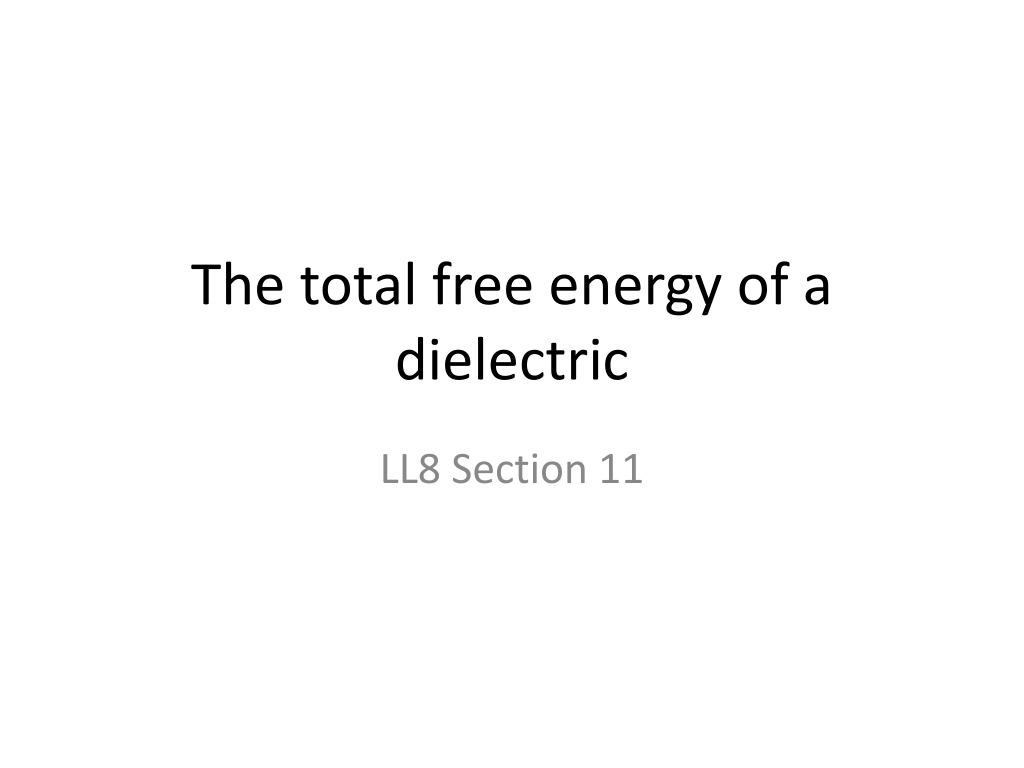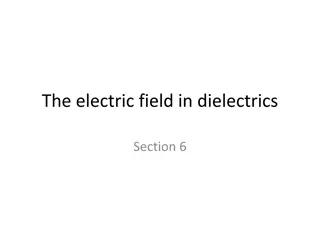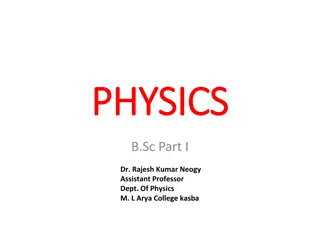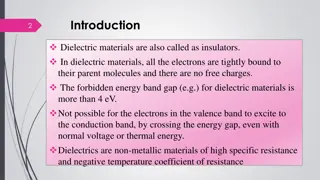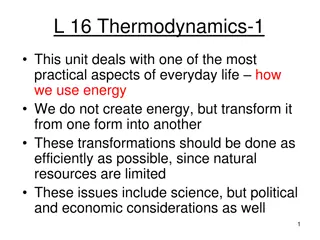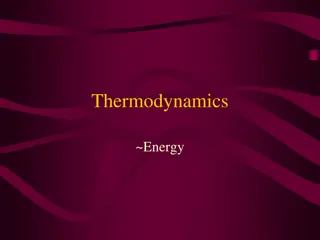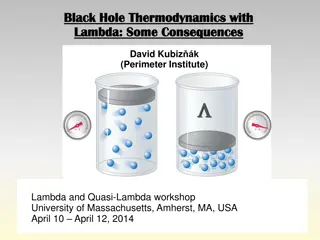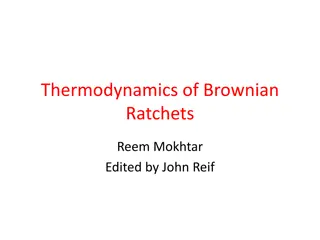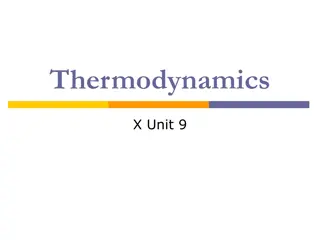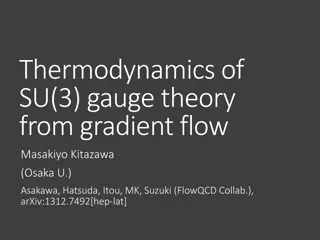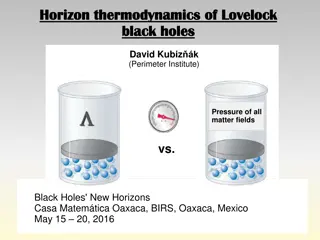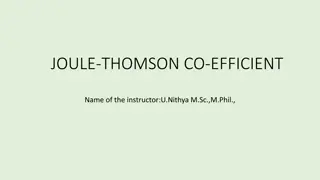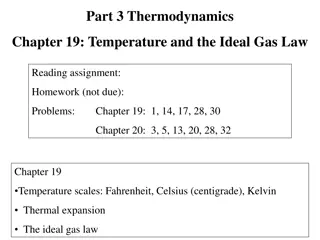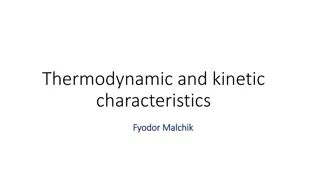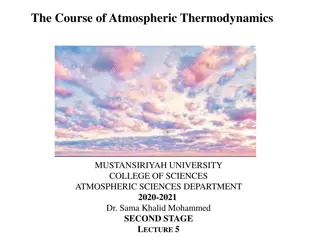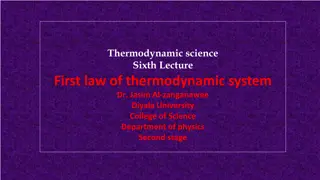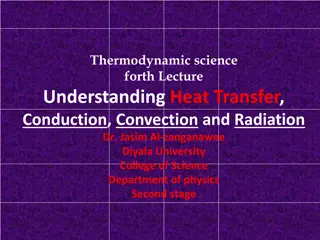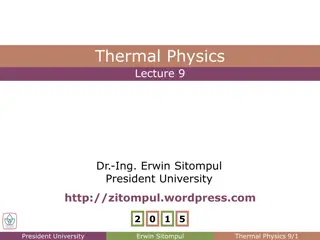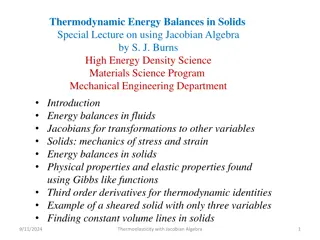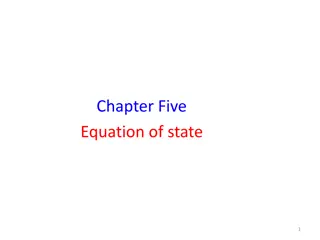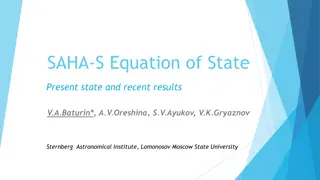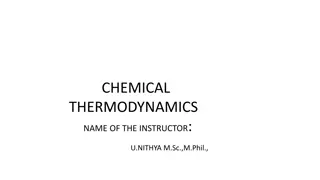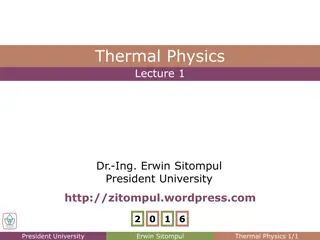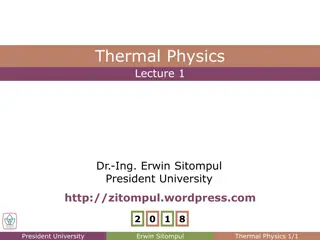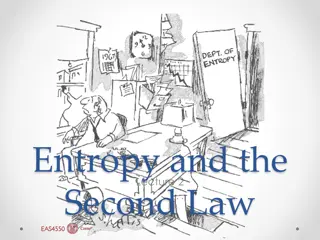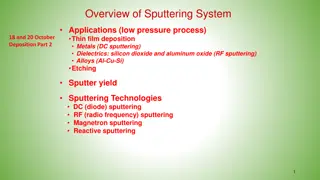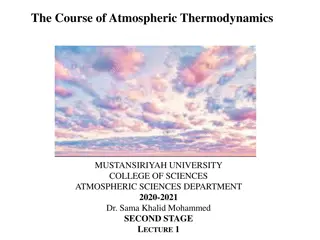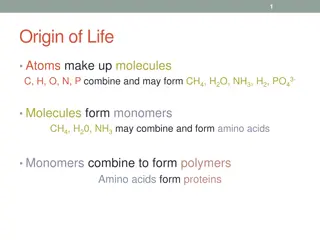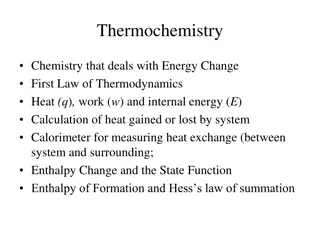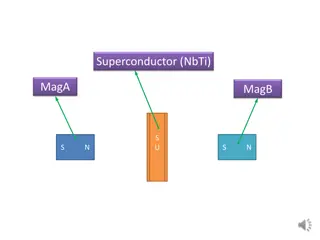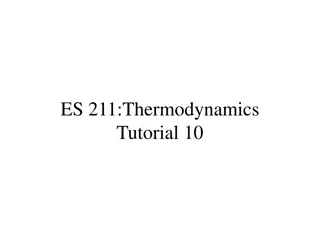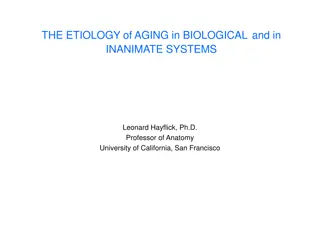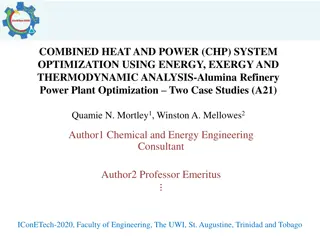Understanding Thermodynamics of Dielectrics
Exploring the thermodynamics of dielectrics involves analyzing the free energy associated with the electric field interactions in these materials. By considering changes in field and total dipole moment, we can calculate the total free energy density and understand the impact of external factors on the dielectric properties.
Download Presentation

Please find below an Image/Link to download the presentation.
The content on the website is provided AS IS for your information and personal use only. It may not be sold, licensed, or shared on other websites without obtaining consent from the author. Download presentation by click this link. If you encounter any issues during the download, it is possible that the publisher has removed the file from their server.
E N D
Presentation Transcript
The total free energy of a dielectric LL8 Section 11
1. Part of the electrostatic free energy of the dielectric that we found in section 10 has nothing to do with the thermodynamics of the dielectric. The first step is to remove the irrelevant part. Dielectric (need not extend to infinity) Electric field includes contributions from both extraneous charge on the conductor and polarization charge in the dlelectric
Field that would be present if dielectric were gone. Old definition of free energy: New definition: Difference has nothing to do with dielectric, so the new definition gives the same thermodynamics.
2. Infinitesimal change in free energy of the dielectric caused by an infinitesimal change in the field while maintaining thermal equilibrium at constant temperature. 3. The change in due to a change in the field, caused by a reversible change in the charges at constant temperature. This is an infinitesimal change. It could be hard to integrate to find the total free energy if polarization does not depend linearly on field.
5. Next, we consider the infinitesimal change in the free energy of a dielectric if the externally applied field is spatially uniform. Total electric dipole moment Oppositely charged conductors If we allow temperature to change, then = negative change in free energy at constant temperature divided by the change in the external field Total dipole moment
7. We again allow the externally applied field to be non-uniform, but we now assume the dielectric is linear and isotropic. In that case the total free energy of the body due to the field can be calculated, not just For a linear isotropic dielectric, D = E, we found in section 10 the total free energy density F Using new definition of free energy of dielectric Subtract cross terms
First integral No extraneous charge in the dielectric No charge in vacuum Since Potentials are constant on surface of conductor Charge on conductor
Second integral This is the total free energy of the body due to an arbitrary externally applied field if the body is a linear isotropic dielectric If the external field is uniform Total dipole moment of dielectric
8. Different derivation for uniform field, for arbitrary dielectric and field: (Infinitesimal change. Might be hard to integrate to find ) Next we assume a linear isotropic dielectric. Then P must be a linear function of + const + + Now assume external field is uniform Same result for isotropic linear dielectric in uniform external field as on slide 9
9. Next we consider a linear dielectric which is anisotropic. For linear dielectric, we can more generally write the components of the total dipole moment induced by a uniform externally applied electric field as Same as for conductors, where polarizability depends only on shape. But for dielectric also depends on For uniform externally applied field Order of derivatives doesn t matter:
10. Finally we consider the free energy of a dilute gas in an arbitrary externally applied electric field, and then for a uniform one. This problem is a preview for the free energy of para- and dia- magnetic media. For a weak or dilute dielectric ~ 1, e.g. a gas. Susceptibility is small. Then the applied field is not changed much by the dielectric Assumed uniform
